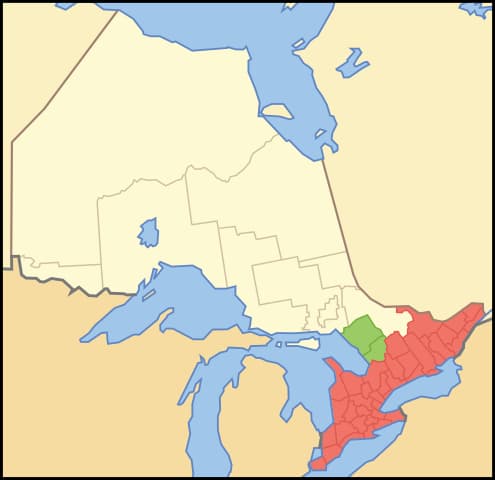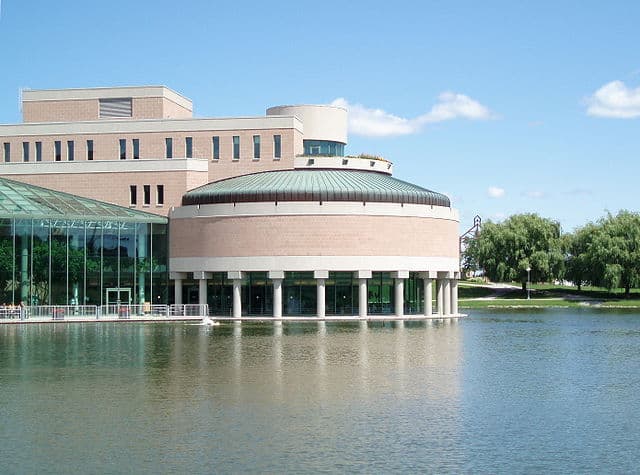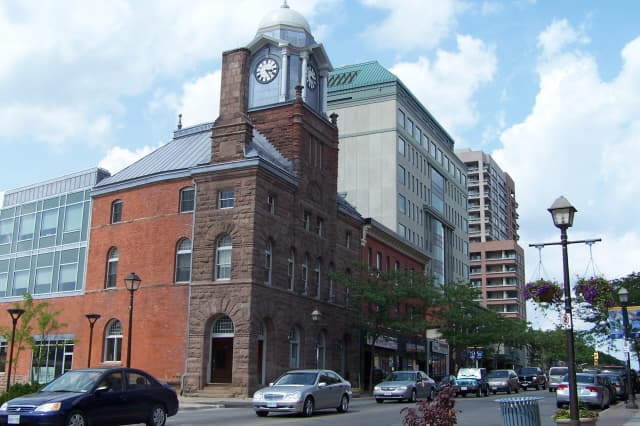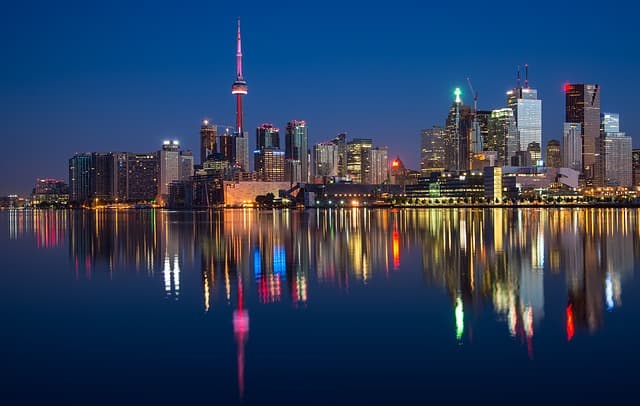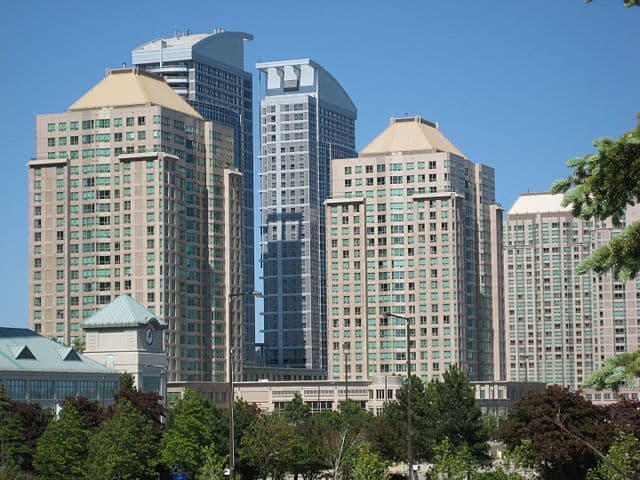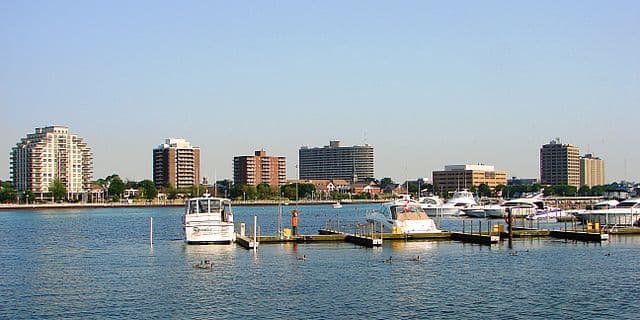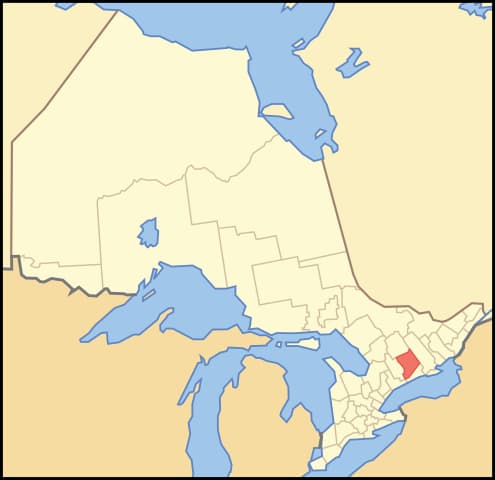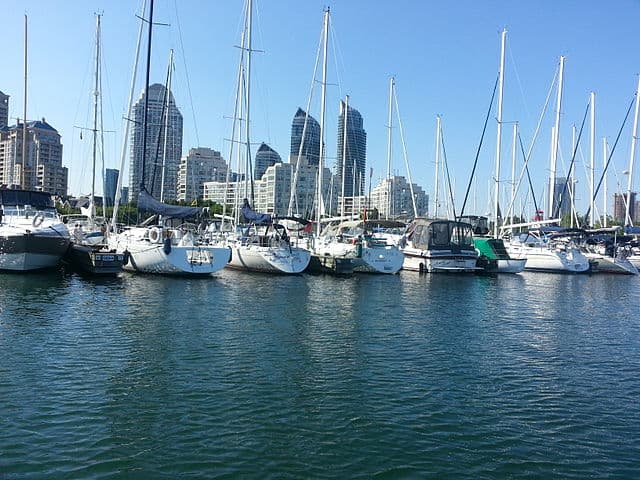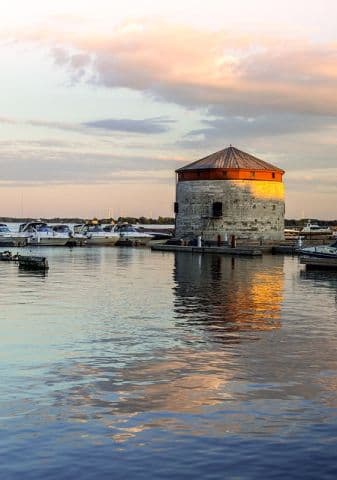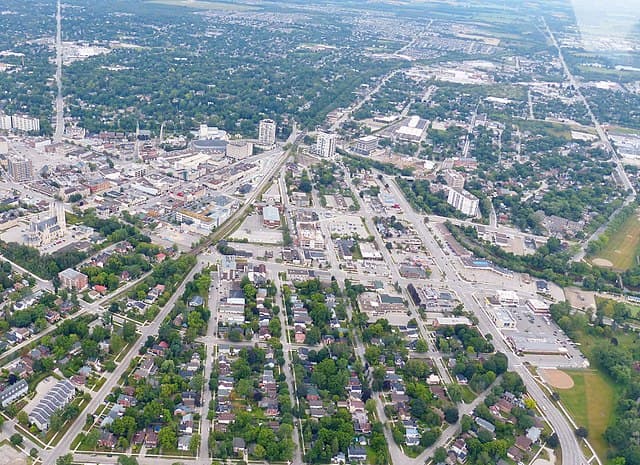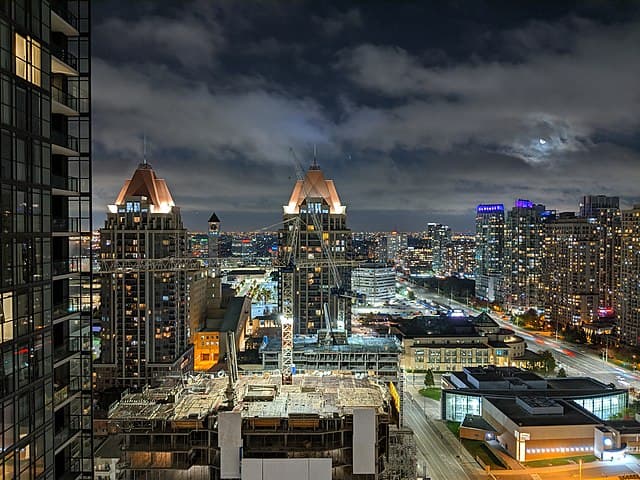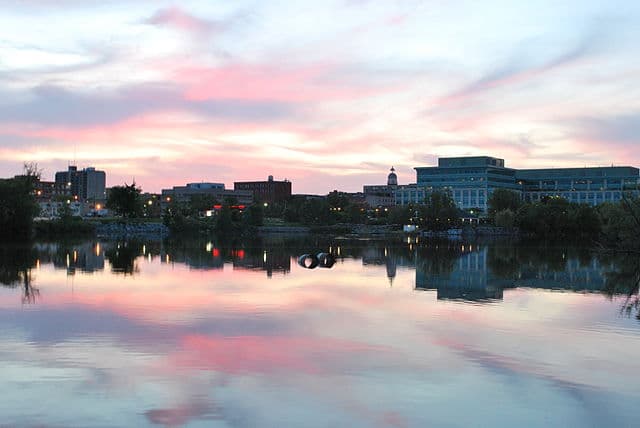Find a Family Doctor in Toronto and Ontario
You’ve made it. You are now a proud permanent resident of Canada but you omit a crucial detail: you don’t have a family doctor. And the thing is, you’re not alone.
Toronto General by Taxiarchos228 at the German Wikipedia / Wikimedia Commons / CC BY-SA 3.0
You’ve made it. You are now a proud permanent resident of Canada, renting an apartment in Toronto, and working at a job that isn’t quite what you hoped for but is a good first step up the economic ladder. You send optimistic emails back home to family and friends but when your mother asks you how the health system works in Canada, you omit a crucial detail: you don’t have a family doctor. And the thing is, you’re not alone.
Canada has a shortage of physicians compared to other developed economies. According to a World Bank Survey, in 2010 we had 2.1 doctors per 1000 population. Ireland has 3.2 per 1000, Israel has 3.7, Germany has 3.7, New Zealand has 2.7, and Australia has 3.9 mate! The reasons why are complex, as they say, but Canada’s Universal Health Care System, combined with our very reasonable tax rates, means we have to ration health care services to control costs and keep them from eating up too large a portion of our Provincial Budgets. It’s the provinces that run and pay for healthcare while the federal government sets the standards. And in Ontario, facing a recession and with rising health care costs, NDP Premier Bob Rae, back in 1992, came up with a solution: restrict the supply of physicians by cutting back on med school graduates. The policy continued under Mike Harris’ Conservative government and has only been partially reversed by more recent Ontario governments.
But you don’t want a policy discussion on healthcare in Ontario. You just want a family doctor somewhere not too far from where you live in Toronto. What steps can you take to try and find one?
Walk-in Clinics:
Toronto East General [Public Domain]
No, this is not the same as having a family physician, but they provide prompt medical care without needing an appointment for those without a family doctor. You should know that even if you are lucky enough to have a family doctor in Toronto, getting an appointment with your doctor is no easy matter and you may have to wait for weeks. So while you will not have the same practitioner caring for you and any family you may have, at a walk-in clinic you will receive prompt attention in well-equipped facilities. Many clinics also have family practices and you may at some future point be able to finally have your own family doctor at the same walk-in clinic you use. But you will have to be patient.
Healthcare Connect:
Toronto General [Public Domain]
This program is a service that attempts to connect you and your family with a family practice. It involves a rigorous screening process that you have to undergo, managed by a nurse, or Care Connector, in your community. You will have to prove that you have been actively seeking a family practitioner. You must also have a valid OHIP card. If not, you must contact the Service Ontario INFO line to get information on how to obtain one. The Care Connector will carefully review your data and may request further interviews with you and your family. Next, the Care Connector will contact local providers to determine who is accepting new patients. Again, you will need to be patient, until they can connect you with a family doctor.
5 Things I Learned as a Foreigner Living in Toronto
Start Dialing
Peter Munk Cardiac Centre [Public Domain]
You can take the direct route and go here for a list of doctors listed in Toronto, over 7,000 of them, and start dialing. You should know that the overwhelming majority of them will not be accepting new patients: a Statscan survey from 2010 shows that 9.2% of Ontario residents are without a regular doctor. That means almost 1.2 million people according to 2010 census data. As well, only about 1 in 10 doctors in Ontario are accepting new patients. That’s a lot of people looking for a limited supply of family doctors, and most family practices are unable to accept new patients. A website called opencare provides a search engine to help you locate possible physicians in Toronto. But whether dialing hundreds of doctor’s offices or clicking away the hours online, you should realize that your search will often be a frustrating one, so the sooner you get started, the better.
Language
You can also search by language. Go here to this page on the College of Physicians and Surgeons of Ontario website, and choose your language in the drop-down menu. For example, you’ll find 24 Hindi speaking family doctors in the Toronto area. Whether any of them are accepting new patients is another matter. There are 74 Cantonese speaking family doctors in the Toronto area. The list of languages available is extensive but some languages may have few practitioners and whether they are accepting new patients is up to you to find out by contacting their office. Even if you can’t find a family doctor in your language that is accepting new patients, try multilingual walk-in clinics, like the Don Mills Medical Clinic in Toronto, for example.
Pharmacies
Another useful tool is iamsick.ca, a site that provides information on opening hours of pharmacies for example as well as operating hours for clinics for recent arrivals who are trying to make their way through the Canadian Healthcare system.
Remember, all these resources will require your active participation to get the information you need to find a family doctor, especially one that speaks your language. It will require a bit of legwork, but taking a little time to find a family doctor that works for you is worth every minute of effort.
Finding a family doctor has been a problem in Canada, especially in Ontario, over the last 30 years or so. During the nasty ‘90s when Ontario went from an NDP high-spending government to a Conservative penny-pinching administration run by the rough-and-ready Premier Mike Harris, Ontario residents in more remote rural areas often had to rely on their local hospital’s emergency room for primary care, given that waiting lists for family doctors often involved a waiting time of many years.
While Canada and Ontario have added physicians at a faster rate than the population growth over the last 15 or more years, finding a family doctor can still be a challenge, especially in rural areas of the province.
But don’t think that it’s merely a case of urban vs. rural. It often depends on what city you are looking at and what town or smaller city you happen to be looking at. Let’s focus on the province of Ontario as we decide how bad the family doctor problem is. So, the question becomes:
What are the best and worst towns and cities in Ontario in terms of availability of family doctors?
To answer that question, we looked at The College of Physicians and Surgeons of Ontario’s (CPSO) website to get some numbers on where family doctors are located in the province. We only used physicians that are registered with the College, so our numbers are on the low side, just to be safe and keep expectations reasonable – especially for new Canadians trying to get a feel for what to expect from Ontario’s healthcare system. Then we looked at population figures for the cities and towns involved in order to calculate the number of family doctors per 100,000 residents.
This, however, is tricky given that some of the cities we looked at are a part of the Greater Toronto Area (GTA) and someone living in Etobicoke, for example, might seek a family doctor in the city of Toronto or in the city of Mississauga. So, for cities in the GTA, it’s likely best to even them out with the overall numbers for Greater Toronto.
As well, we tried to include the larger population centres in the province, as this is where most new Canadians end up moving because that’s both where the jobs and communities with links to their home countries are likely to be. However, we included one or two smaller towns to give an idea of what it is like in a rural area.
One caveat when looking at the figures for smaller towns – which often show a large number of family doctors per 100,000 population – is that these doctors also serve neighbouring towns and rural areas so the actual population they provide medical services to is in fact much higher than the town’s population.
Nonetheless, there were some interesting surprises when it came to where the highest and lowest number of family doctors per 100,000 population lived. Let’s dive in and look at the numbers. It’s time for:
The Top 6 Worst and Best Locations in Ontario to Find a Family Doctor
Southern Ontario [Public Domain]
Top 6 Worst Cities in Ontario for Family Doctors
In a year when a pandemic is ravaging the world, it’s good to know where to get medical help from a qualified primary care practitioner. Unfortunately, not every city in Ontario offers the same density of family doctors. These are 6 cities that need to work on getting more family doctors to move to their location.
6. Kitchener-Waterloo (southwestern Ontario)
Waterloo by Giligone / Wikimedia Commons / CC BY-SA 3.0
Look, there’s no question that this is a place that well-educated professionals are moving to because of this city’s role as an emerging tech and innovation hub with a world class university and a quality of life that isn’t quite as hectic as Toronto and a fair bit cheaper as far as housing is concerned.
But doctors haven’t increased at the same rate. That’s why its rate of family doctors per 100,000 population is only around 35. That’s not bad. It’s just not as good as you might expect from such a successful city.
Especially when compared with its neighbour just to the east, Guelph. As you’ll see below in our Top 6 list, Kitchener-Waterloo would LOVE to have Guelph’s physician density. That’s something that will take some time, however. Meanwhile maybe you’ll have to drive to Guelph to find a doctor.
5. Markham (GTA)
by Raysonho [Public Domain]
What’s not to like about this suburban paradise?
Well, it doesn’t quite have the number of family doctors you’d like if you’re deciding where to live in Canada. The number comes in at 32.4 family doctors per 100,000 population which is reasonable, but not as good as some other locations, as you’ll see in our Top 5 best list a little below.
Markham does have a lot of major companies and associated jobs and upscale housing if you can afford it. But you might have to look in other areas of the GTA for your family physician if you’ve decided to settle in Markham.
4. Brampton (GTA)
by Trappy / Wikimedia Commons / CC BY-SA 3.0
With a very diverse population, this GTA member attracts people from around the world, and unfortunately the physician growth is not quite what it should be in order to keep up. 29.9 which is basically 30 physicians per 100,000 is not that bad a number, but it is far from the best or even that good a comparison to an average number of family doctors as far as Ontario’s municipalities are concerned.
If you’re willing to get in your car and drive, there are choices in neighbouring cities like Mississauga, for example. So, keep in mind that there are better places to find a family doctor than Brampton.
3. The Greater Toronto Area
Surprised? The CPSO lists about 1,000 family doctors plying their trade in the metropolitan area. That works out to about 20 family doctors per 100,000 people.
But this is an average over the community of cities that make up the GTA. So, some areas are likely to be better for finding a family doctor than others as you’ll see further below, especially in the Top Best list.
However, remember that in the GTA if you’re willing to drive a little longer than your trip to the grocery store, you may be able to find a doctor in a neighbouring city, depending on their rules for accepting new patients. Use the GTA’s figure of 20 per 100,00 as a counterweight to balance out the much better numbers for places like North York or Mississauga.
2. Scarborough (Toronto)
by SimonP / Wikimedia Commons / CC BY-SA 3.0
Next, we have the eastern suburbs of the GTA where you have 18.5 family physicians per 100,000 population. Again, though this number is disappointingly low, residents of Scarborough can always drive to places like Markham or Toronto proper to find a doctor. Or even travel less than an hour east to Peterborough which is one of the big surprises of our survey. See below for more details.
1. Sarnia (southwestern Ontario)
by P199 / Wikimedia Commons / CC BY-SA 3.0
Oil refineries and relatively high pollution levels would make you think it’s a good town to be a physician in.
However, the lowest rate of family doctors per 100,000 population in larger towns and cities in Ontario goes to the city on the shores of the St. Clair River. That would be barely over 7 per 100,000. While you’ll find worse numbers in some remote rural areas, for a small city, those are worrying numbers.
Top 6 Best Cities for Finding a Family Doctor in Ontario
6. Ottawa (southeastern Ontario)
No surprise. Bureaucrats tend to make sure they attract lots of doctors to the city they live and work in, and Ottawa is a well-laid-out city that’s attractive to young graduate physicians looking for quality of life.
Especially seeing as your family doctor is more and more likely to be a woman who carefully evaluates any city she might choose to set up her practice in. Plus, there’re research facilities and a couple of fairly good – I didn’t say “great”, all you Carleton graduates – universities and institutes to engage bright enquiring minds.
That’s resulted in 75.8 family doctors per 100,000. That’s a whole different level of physician density than in our worst list that we’ve just waded through. Welcome to the better half of family care in Ontario.
5. Etobicoke (Toronto)
by Horemans44 / Wikimedia Commons / CC BY-SA 1.0
The western edge of the City of Toronto is one way to think of this sprawling but somehow less visible part of the GTA. That is, you tend to think more of the neighbourhoods that are to the immediate east like High Park, or think of its big sister to the west, Mississauga. Plus, it’s a strange mix of industrial parks, highways, middle class neighbourhoods and a few upscale enclaves nestled near the Humber River.
But the density of family physicians is, let us say, rather unforgettable at 82.2 per 100,000. That’s a nice contrast from being one of the few cities around the globe that have only part of an airport in their territory. (Pearson International is mostly in Mississauga but a portion of it extends into Etobicoke.) And a good reason to consider living in Etobicoke.
4. Kingston (southeastern Ontario)
Like Ottawa, Kingston was once the location of Canada’s new capital city. Strategic location favoured a greater distance from what then was a southern neighbour bent on adding British North America or the Dominion of Canada to its already vast territory, so Ottawa won out.
But the charming limestone city on the shores of Lake Ontario and just west of the Thousand Islands, where the St. Lawrence begins and Lake Ontario ends, has a truly impressive level of physician density when it comes to family doctors. Try 87.3 per 100,000 population. With a university and college and research institutes it’s a city that punches above its weight, including in healthcare.
And with Ottawa’s wealth of hospitals less than 90 minutes to the north, you pretty much have any health issued covered.
3. Guelph (southwestern Ontario)
by JS Bond / Wikimedia Commons / CC BY-SA 4.0
It seems surprising that Guelph comes out ahead of Kitchener-Waterloo with this metric but remember that the Kitchener-Waterloo area next-door is growing by leaps and bounds as it cements its role as a high-tech hub with numerous well-paying jobs. That means family doctors haven’t been able to keep up with the explosive growth in the city to Guelph’s west.
This is not the case in Guelph itself, however, a smaller city east of the Kitchener-Waterloo area with about a quarter of the population but with nearly triple the physician density. There are 97.7 family doctors per 100,000 in Guelph compared to around 35 in Kitchener-Waterloo.
Maybe in a decade or two Guelph and Kitchener-Waterloo will be one continuous urban area, but for now if you’re looking for a family doctor, live in Guelph and commute to your work in Waterloo.
2. Mississauga (GTA)
by Sikander Iqbal / Wikimedia Commons / CC BY-SA 4.0
Etobicoke’s big sister indeed. With most of Pearson International firmly grounded in its territory – take that Etobicoke! – and a broad range of corporations and mid-to-small businesses with one of Canada’s most diverse populations, it can also boast of very impressive physician density. It has 108.7 family doctors per 100,000 population.
The only other city in Ontario with that sort of availability of family doctors is our number 1 pick just below.
1. Peterborough (southeastern Ontario)
by Jkentrandall / Wikimedia Commons / CC BY-SA 3.0
Say what? The cozy little city a little to the east and north of Oshawa? With Trent University, brick homes and tree-line streets and the Kawartha Lake district just to the north of Peterborough?
Yes. That Peterborough.
Hold on to your OHIP cards. We’re talking about 218 family doctors per 100,000. That’s almost triple Ottawa’s density.
But a little caution is due here. Peterborough physicians likely serve a large rural base of patients in the surrounding lakes area so the actual density might be lower when you consider who will be on any family doctor’s list of regular patients. Still, it’s an astonishing number compared to other cities in Ontario.
Surprised? Outraged? Skeptical? Let us know.
Statistics are always tricky, and we’ve tried to be clear about our methods. But what is beyond doubt is that more than a few cities in Ontario are going to have to attract more family doctors if they want to offer a quality of life that will make them magnets for companies and workers. Which will mean they’ll then have to attract another wave of family doctors. But as COVID-19 is teaching us, health matters almost more than anything else sometimes.
![Toronto General Hospital Taxiarchos228 at the German language Wikipedia [GFDL (http://www.gnu.org/copyleft/fdl.html) or CC-BY-SA-3.0 (https://creativecommons.org/licenses/by-sa/3.0/)], via Wikimedia Commons](https://upload.wikimedia.org/wikipedia/commons/thumb/8/89/Toronto_-_ON_-_Toronto_General_Hospital.jpg/640px-Toronto_-_ON_-_Toronto_General_Hospital.jpg)
![Toronto East General By Dutch Uncle (Uploader/creator is Rrburke on English Wikipedia) (Own work) [Public domain], via Wikimedia Commons](https://upload.wikimedia.org/wikipedia/commons/thumb/f/fb/TEGH.JPG/640px-TEGH.JPG)
![Toronto General Hospital By Raysonho @ Open Grid Scheduler / Grid Engine (Own work) [CC0], via Wikimedia Commons](https://upload.wikimedia.org/wikipedia/commons/thumb/4/49/Toronto_General_Hospital4.JPG/640px-Toronto_General_Hospital4.JPG)
![Toronto General Hospital By Raysonho @ Open Grid Scheduler / Grid Engine (Own work) [CC0], via Wikimedia Commons](https://upload.wikimedia.org/wikipedia/commons/thumb/4/4d/Toronto_General_Hospital2.JPG/318px-Toronto_General_Hospital2.JPG)
